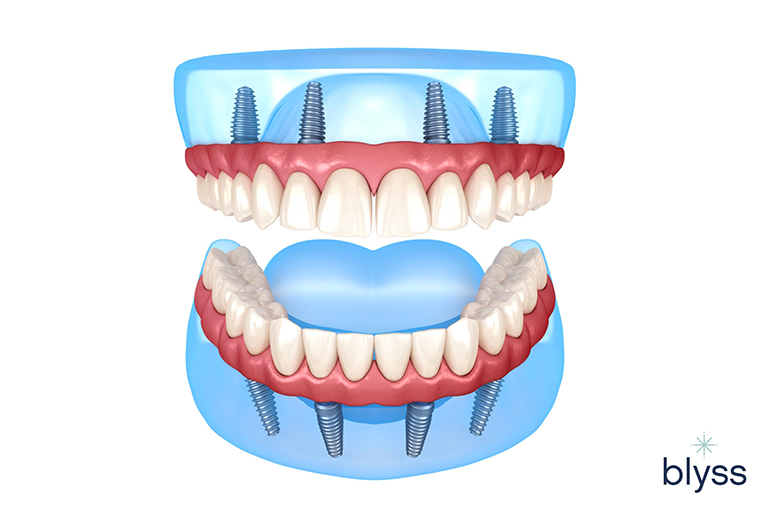Our Dental Sense PDFs
Our Dental Sense PDFs
Blog Article
The Ultimate Guide To Dental Sense
Table of ContentsMore About Dental SenseDental Sense Fundamentals ExplainedThe Greatest Guide To Dental SenseWhat Does Dental Sense Mean?
are medical devices operatively dental implanted right into the jaw to bring back a person's capability to eat or their appearance. They supply assistance for synthetic (fake) teeth, such as crowns, bridges, or dentures. When a tooth is lost due to injury or condition, a person can experience complications such as fast bone loss, faulty speech, or modifications to chewing patterns that lead to pain.Dental implant systems include an oral implant body and oral implant joint and might likewise consist of a joint fixation screw. Dental veneers cost. The dental implant body is operatively put in the jawbone in place of the tooth's root. The oral implant joint is usually attached to the implant body by the joint addiction screw and expands through gums into the mouth to support the affixed man-made teeth
(http://peterjackson.mee.nu/where_i_work#c2504)Structure of The Oral Implant System selecting oral implants, talk to your oral supplier about the prospective advantages and dangers, and whether you are a prospect for the procedure. Points to take into consideration: Your overall health is a vital consider identifying whether you are an excellent candidate for oral implants, how much time it will require to heal, and how much time the implant might remain in location.
Cigarette smoking might impact the healing process and reduce the lasting success of the implant. The recovery procedure for the dental implant body may take a number of months or longer, during which time you commonly have a short-term abutment in place of the tooth. the oral implant procedure: Very carefully adhere to the dental hygiene directions offered to you by your oral service provider.
What Does Dental Sense Do?
Implant failing can lead to the requirement for another procedure to fix or replace the dental implant system. Restores the capability to chew Brings back aesthetic appearance Helps maintain the jawbone from shrinking as a result of bone loss Protects the wellness of the bordering bone and periodontals Helps maintain nearby (nearby) teeth stable Enhances lifestyle Damage to bordering natural teeth during dental implant positioning Injury to the surrounding tissues during surgery, such as sinus perforation Injury throughout surgical procedure (for example, crack of bordering jawbone) Inadequate function, such as seeming like the teeth do not bite together normally A feeling that the tooth is loosened or twisting in place arising from an abutment screw loosening up Implant body failing (looseness of the dental implant body) because of systemic infection, which might be most likely in clients with unchecked diabetics issues as a result of regional infection in bone and periodontals sustaining the implant body due to postponed healing, which might be more probable in patients that smoke Difficulty cleansing the gums around the implant, leading to poor oral health Without treatment gum illness Post-surgical tingling as a result of nerve impingement or damages Constantly alert healthcare service providers and imaging specialists that you have oral implants before any type of magnetic resonance imaging (MRI) or x-ray procedures.
FDA is not aware of any damaging events reported for MRI or x-ray treatments with dental implants. Dental implants systems are best site normally made of materials that follow worldwide consensus standards of the International Company for Standardization (ISO) or ASTM International. These standards have details of what makes a secure material.

An oral implant is a structure that changes a missing out on tooth. With screw-like tools, the surgeon inserts an implant into the jawbone, and it functions as an anchor for an artificial tooth, called a crown. A tool called an abutment connects the artificial tooth to the dental implant. The crown is customized to fit the person's mouth and match the shade of their teeth.
Fascination About Dental Sense
Some individuals are not qualified for dental implant surgical treatment. It is for oral cosmetic surgeons to operate people with: severe illnessuncontrollable metabolic diseasebone or soft tissue condition or infectionIf these concerns are fixed, an individual can have the surgery. In, oral specialists abstain from operating people with: If individuals with any one of the above undergo oral implant surgery, there is a greater risk of the implant failing.

Dental implant surgical treatment is a tailored process. Provide you time to recover. Affix the blog post and last crown, bridge or denture.
Next, your doctor will carefully put the oral implant into your jaw. If your dental implant is near the front of your mouth, your dental professional will certainly make a temporary tooth for you to use till you recover.
The Definitive Guide for Dental Sense
Your copyright can tell you what to anticipate in your situation. Throughout the healing phase, your jawbone needs to fuse to the oral implant. This process, called osseointegration, is vital for security and long-term success. This procedure can take anywhere from three to 9 months. In many cases, it might take longer.
Once your implant heals, your dental expert can affix the abutment (little adapter message) and your last remediation (crown, bridge or denture). This generally takes regarding one hour to finish and might need a 2nd minor surgical treatment. You shouldn't really feel any pain throughout your dental implant treatment due to the fact that your company will make use of drug to numb your periodontals.
Report this page